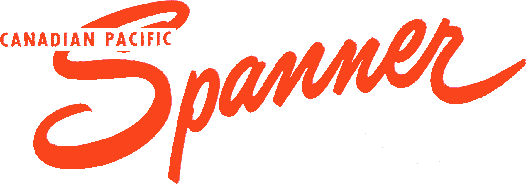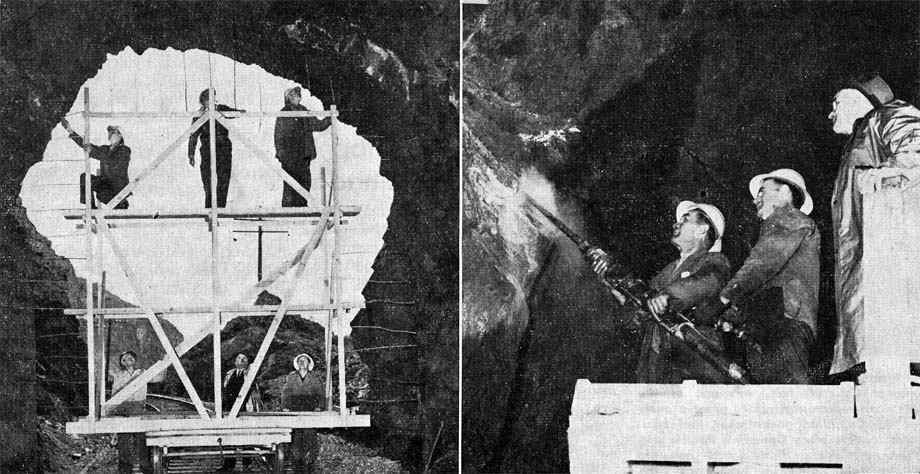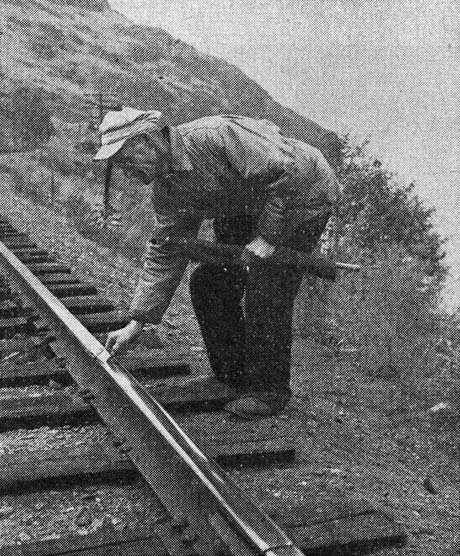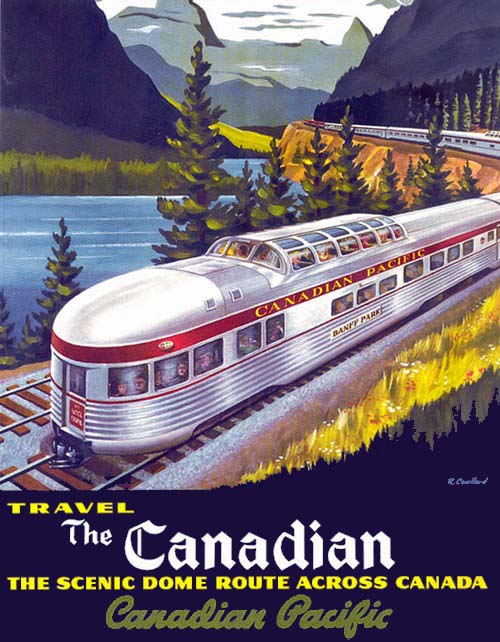

Rail Clearances Are Checked and Adjusted to Accommodate New Passenger Equipment
The company's new scenic dome observation lounge cars, part of a $38,000,000 order for 155 streamlined,
stainless steel cars to re-equip the railway's transcontinental passenger trains, will make their first
appearance in Canada next year, but already their influence is being felt in British Columbia.

Inspection work is well under way on the many tunnels on the Pacific Region to ensure they will accommodate the new type observation cars which will embody the finest rail travel features of any on the continent.
Also under inspection for the advent of the new cars are some of the most spectacular tunnel engineering feats on this continent, the five-mile Connaught Tunnel under the towering Mount Macdonald, opened in 1916, and the world-famous, pretzel-like Spiral Tunnels on the Canadian Pacific line east of Field, B.C., constructed in 1908.
However, no modifications are expected here for the new "blister" observation and lounge cars. Minor stoping, or rock excavation, will be necessary in other regional mountain underpasses, it was stated.
"It isn't that we can't handle these new cars with present clearances," T.W. Creighton, district engineer at Vancouver, said, "but these cars, built by the Budd Company of Philadelphia, will be so equipped with modern springs for the last word in riding comfort, that we are following through to provide maximum room for expected spring action, particularly on curves."
Mr. Creighton went on to explain that older railway cars, just like the old-time automobiles, were not constructed with the springiness that makes for the smoother riding qualities of modern equipment.
First excavation work has begun in a 200 foot tunnel near Cherry Creek, 14 miles west of Kamloops, B.C. A template, or contour pattern of required tunnel dimensions was first passed through the curving bore, and rock projections which exceeded newly specified heights and widths are being blasted and chipped away.
The tunnels involved in the enlarging project, including the 4,579 foot rail line under the city of Vancouver (the Dunsmuir Tunnel now used by SkyTrain to reach Waterfront Station), the aptly-named 1,459 foot "Long Tun" near Spuzzum on the Cascade subdivision, 584 foot "Black Canyon" near Basque on the Thompson subdivision, right down to the 101 foot "Cariboo Joe" near Ades on the Cascade subdivision, are to undergo careful inspections prior to being OK'd for use by the railway "Prima Donnas", which will next year start to revolutionize rail travel in Canada.

 Railway Limited and is reprinted here with their permission. All photographs, logos, and
trademarks are the property of the Canadian Pacific Railway Company.
Railway Limited and is reprinted here with their permission. All photographs, logos, and
trademarks are the property of the Canadian Pacific Railway Company.
